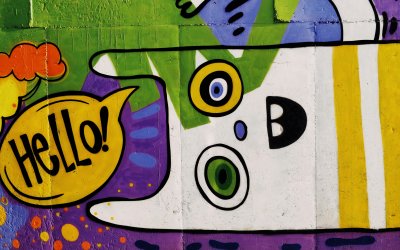

There are more than 7,000 languages in existence today, but just 10 account for a third of all native speakers and two-thirds of total speakers. In this article, we’ll explore the most spoken languages in the world and examine why they’re so widespread.
Counting language speakers is tricky business
To understand how many people speak a language, we first need to decide whether to count everyone who speaks it or just those who grew up with it. For instance, English is the most spoken language on earth by total number of speakers (1.5 billion), thanks to its global influence in business, media, and education. However, when counting only native speakers, Mandarin Chinese takes the lead (941 million), due to China’s massive population.
There’s also debate about what constitutes a language. For instance, “Chinese” refers to a family of languages, including Mandarin and Cantonese, which are distinct enough that their speakers often can’t understand each other. Similarly, “Arabic” encompasses very different dialects, like Egyptian and Moroccan Arabic.
Another challenge is data accuracy. Estimates of speakers come from different sources, collected at different times, often using inconsistent methods.
We’ll consider both total and native speakers, using the most reliable and current data source available today.
Top languages by total number of speakers
| Rank | Language | Speakers |
|---|---|---|
| 1 | English | 1.5 B |
| 2 | Mandarin Chinese | 1.1 B |
| 3 | Hindi | 609 M |
| 4 | Spanish | 560 M |
| 5 | Standard Arabic | 332 M |
| 6 | French | 312 M |
| 7 | Bengali | 278 M |
| 8 | Portuguese | 264 M |
| 9 | Russian | 255 M |
| 10 | Urdu | 238 M |
| 11 | Indonesian | 199 M |
| 12 | German | 134 M |
| 13 | Japanese | 123 M |
| 14 | Nigerian Pidgin | 121 M |
| 15 | Egyptian Arabic | 103 M |
Data from the Ethnologue 2025 report (see more languages). Speaker numbers are shown in millions.
Top languages by number of native speakers
| Rank | Language | Speakers |
|---|---|---|
| 1 | Mandarin Chinese | 941 M |
| 2 | Spanish | 486 M |
| 3 | English | 380 M |
| 4 | Hindi | 345 M |
| 5 | Bengali | 237 M |
| 6 | Portuguese | 236 M |
| 7 | Russian | 148 M |
| 8 | Japanese | 123 M |
| 9 | Yue Chinese | 86 M |
| 10 | Vietnamese | 85 M |
| 11 | Turkish | 84 M |
| 12 | Wu Chinese | 83 M |
| 13 | Marathi | 83 M |
| 14 | Telugu | 83 M |
| 15 | Western Punjabi | 82 M |
Data from the Ethnologue 2025 report (see more languages). Speaker numbers are shown in millions.
It’s worth noting that Arabic isn’t listed because it’s a macrolanguage made up of many distinct dialects, often mutually unintelligible. While Standard Arabic is widely used as the formal language across the Arab world, it is not spoken as a native language, as people grow up using regional dialects in daily life.
15 most spoken languages worldwide: a deep dive
1. English

- Total speakers: 1.5 billion
- Native speakers: 380 million
English is the most spoken language in the world by total speakers (native and non-native). Its dominance comes from its role as a global lingua franca, crucial in business, science, entertainment, and many other fields.
Spoken in 186 countries and official in 67, English connects people across continents like no other language. This is especially true online – over 50% all web content is in English.
While English has many regional dialects, such as British, American, and Australian, they remain mutually intelligible and relatively easy to learn.
2. Mandarin Chinese

- Total speakers: 1.1 billion
- Native speakers: 941 million
Mandarin Chinese is the most spoken language on earth by native speakers. Largely due to China’s immense population, where 78% of all Mandarin speakers live. It also has around 200 million second-language speakers, though its global reach is much more limited compared to English.
Actually, Mandarin is not a single language, but a group of dialects sharing the same written form. However, their spoken forms are not mutually intelligible, meaning a person from Sichuan may not understand a Hubei native.
Mandarin is one of the hardest languages to learn due to its tonal and logographic systems. Tones change a word’s meaning based on pitch, while logograms represent entire words or meanings instead of sounds. Despite its complexities, Mandarin is essential for engaging with China, a cultural and economic powerhouse with growing global influence.
3. Hindi

- Total speakers: 609 million
- Native speakers: 345 million
Hindi is the third most spoken language in the world by total speakers. As one of India’s two official languages alongside English, it serves as a unifying lingua franca across the country’s 22 officially recognized languages and more than a hundred regional tongues. Over half of India’s population speaks Hindi.
Written in the Devanagari script, Hindi is a phonetic language, meaning its characters closely match their spoken sounds, making it easier to read once you learn the script. It has a complex system of verb conjugations and honorifics that reflect social relationships. Its vocabulary embodies India’s deep history, with influences from Sanskrit, Persian, and Arabic.
Although learning Hindi isn’t easy, it offers access to India’s rich culture and one of the world’s fastest-growing economies.
4. Spanish

- Total speakers: 560 million
- Native speakers: 486 million
Spanish is the second most spoken language in the world by native speakers, fourth by total speakers, and the second most used language online. It’s the official language in 21 countries, primarily in Latin America, as well as Spain and parts of Africa. Interestingly, the United States has the second-largest population of Spanish speakers globally.
Written in the Latin alphabet, Spanish has consistent pronunciation, making it easier for learners to pick up. It is a Romance language, closely related to French, Italian, and Portuguese, which means knowing one of these can help you understand the others.
Learning Spanish is relatively easy for English speakers and offers access to diverse cultures, rich literature, and expanding business opportunities in Latin America and Europe.
5. Standard Arabic
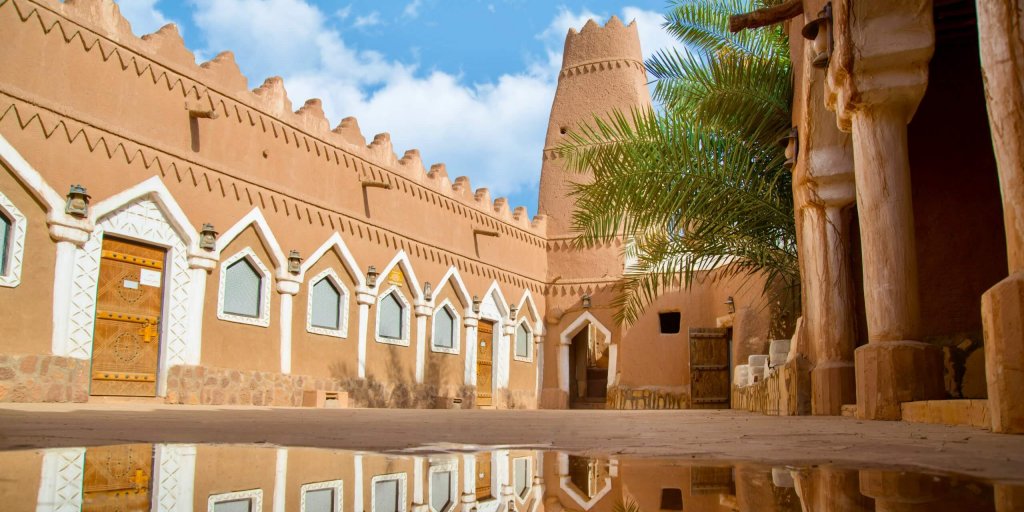
- Total speakers: 332 million
- Native speakers: None
Standard Arabic is the fifth most spoken language in the world by total speakers. It is the official language in 24 countries across the Middle East and North Africa and acts as a unifying written form for a diverse range of Arabic dialects. These dialects, such as Egyptian Arabic and Levantine Arabic, differ significantly, often making them mutually unintelligible.
People don’t speak Standard Arabic in everyday life, it’s primarily used in formal contexts like mass media, education, and literature.
Standard Arabic closely resembles Classical Arabic, the language of the Quran. Its script is written from right to left and uses an alphabet of 28 letters. Its rich morphology and structure make it challenging for learners, but mastering Arabic provides access to a wide range of cultures, history, and growing opportunities in the Middle East.
6. French

- Total speakers: 312 million
- Native speakers: 74 million
French ranks as the sixth most spoken language in the world by total speakers. It’s the official language in 29 countries across Europe, Africa, the Americas, and Oceania. Over half of French speakers live in Africa, reflecting the enduring legacy of French colonial history and its role as a lingua franca in many African nations.
Often considered the language of culture, French holds a prominent place in diplomacy, arts, and international organizations. It is one of the official languages of the United Nations, the European Union, and numerous global bodies like UNESCO and NATO.
French is written in the Latin alphabet and follows relatively consistent pronunciation rules. However, its grammar can be challenging, with gendered nouns and complex verb conjugations. Despite this, learning French opens doors to a wealth of literature, film, and opportunities in global diplomacy and trade.
If you’re interested in learning French, check out these articles on the best methods, apps, and courses to help you get started.
7. Bengali

- Total speakers: 278 million
- Native speakers: 237 million
Bengali ranks seventh globally by total speakers. It is the official language of Bangladesh and the second most spoken language in India, particularly common in the state of West Bengal. In South Asia, Bengali plays a key role as a cultural and linguistic bridge, connecting millions across borders.
Written in its own script, derived from the ancient Brahmi script, Bengali is a phonetic language in which written characters closely match their spoken sounds. The language is also known for its rich vowel system and rhythmic quality, which contribute to its poetic and melodic nature.
Bengali has a deep cultural heritage, with a history of producing globally celebrated literature and art. This includes the works of Rabindranath Tagore, the first non-European Nobel laureate in Literature.
8. Portuguese

- Total speakers: 264 million
- Native speakers: 236 million
Portuguese ranks eighth globally by total number of speakers. It is the official language of 9 countries across 4 continents, including Brazil, Portugal, Angola, and Mozambique. Portuguese is the most widely spoken language in the Southern Hemisphere. Interestingly, only 5% of Portuguese speakers live in Portugal, with Brazil accounting for the majority.
Written in the Latin alphabet, Portuguese features a rich system of nasal vowels, giving it a distinct and memorable sound. While its European and Brazilian variants are mutually intelligible, they differ in pronunciation, vocabulary, and even grammar, much like British and American English.
The language’s global spread is rooted in Portugal’s colonial history, but its evolution has been shaped by the unique cultures of each Portuguese-speaking country.
9. Russian
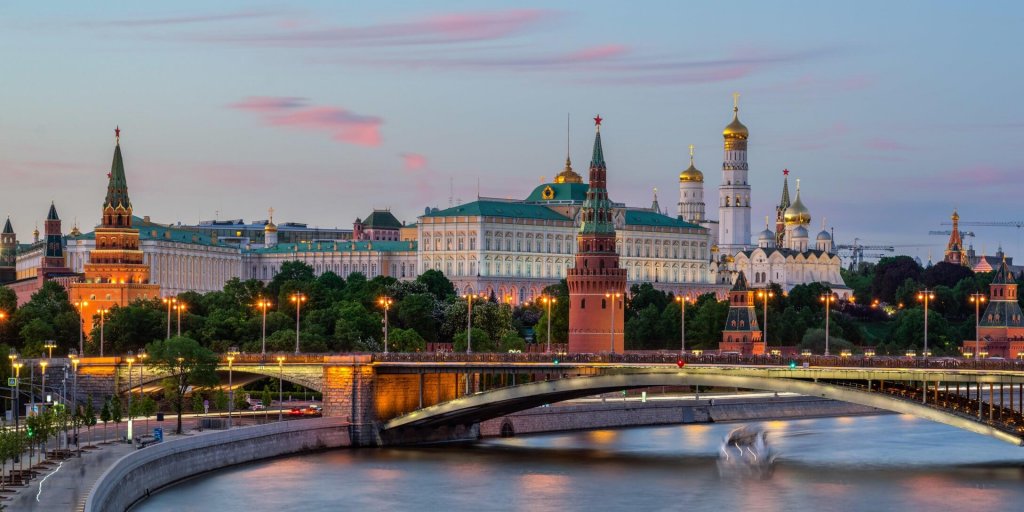
- Total speakers: 255 million
- Native speakers: 148 million
Russian ranks ninth globally in total speakers and has the most native speakers in Europe. It’s also the most widely spoken Slavic language. Russian serves as the official language in 4 countries and is commonly used across much of Eastern Europe, Central Asia, and the Caucasus, reflecting its historical influence during the Soviet era.
Written in the Cyrillic alphabet, Russian is known for its complex grammar, including 6 grammatical cases, genders, and verbs that distinguish completed and ongoing actions. However, it has a logical structure and consistent rules.
Russian’s cultural impact is immense, from its rich literary tradition, featuring authors like Tolstoy and Dostoevsky, to its influence on global music, cinema, and philosophy.
10. Urdu
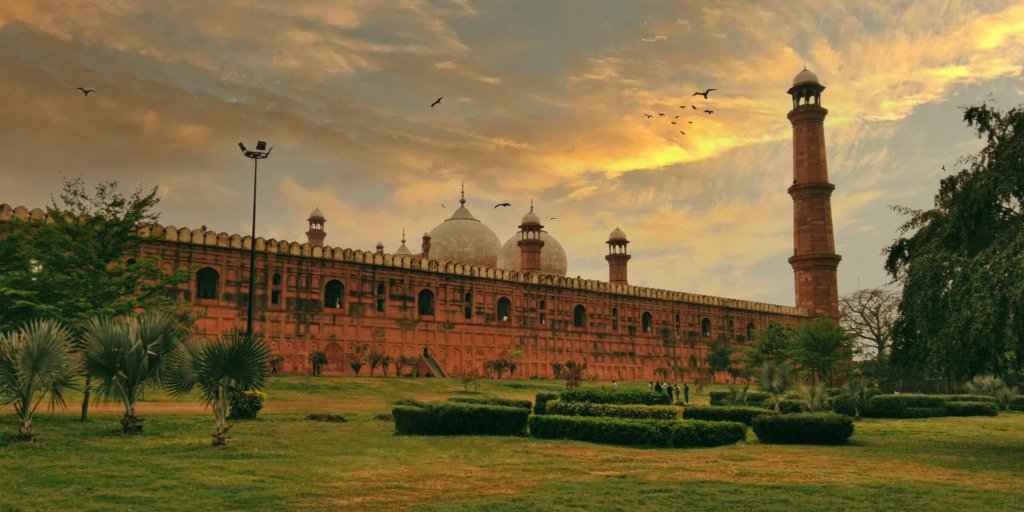
- Total speakers: 238 million
- Native speakers: 70 million
Urdu is the national language of Pakistan and widely spoken in certain regions of India. Urdu and Hindi share linguistic roots and are mutually intelligible in spoken form, but their scripts differ: Urdu uses a modified Persian script, while Hindi is written in Devanagari.
Admired for its grace and poetic beauty, Urdu has a rich literary tradition, especially in poetry. Its formal structure includes elaborate honorifics and politeness levels, emphasizing the cultural importance of respect.
11. Indonesian

- Total speakers: 199 million
- Native speakers: 44 million
Indonesian, or Bahasa Indonesia, is the official language of Indonesia, a country with over 270 million people and more than 700 native languages. Most Indonesian speakers use it as a second language for communication across the nation’s diverse linguistic landscape.
Known for its simplicity, Indonesian uses the Latin alphabet and features straightforward grammar with no conjugations, grammatical gender, or plural forms. These qualities make it one of the easier languages to learn.
Indonesian reflects the country’s history as a cultural and trade crossroads through loanwords from Sanskrit, Arabic, Dutch, and English.
12. German
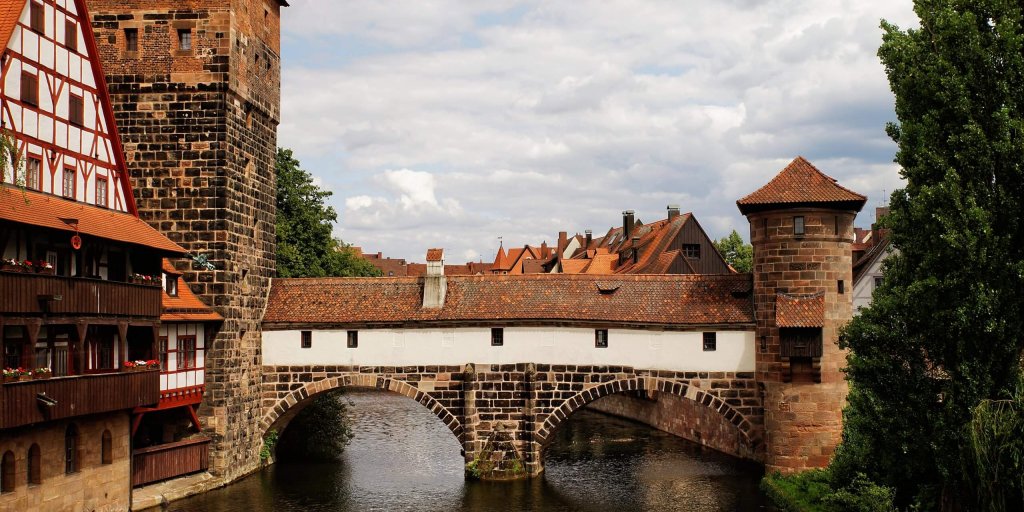
- Total speakers: 134 million
- Native speakers: 76 million
German is the most widely spoken native language in the European Union and serves as an official language in Germany, Austria, Switzerland, and several other countries. Despite its relatively small number of native speakers, German is one of the most learned languages in the world, valued for its cultural and professional significance.
German grammar can be challenging, with its use of gendered nouns, cases, and long compound words, but it follows consistent and logical rules. Written in the Latin alphabet, German pronunciation is relatively straightforward once you grasp its patterns.
Known as the language of thinkers and poets, German boasts a rich literary tradition with works by Goethe, Kafka, and Nietzsche.
13. Japanese

- Total speakers: 123 million
- Native speakers: 123 million
Japanese is the official language of Japan, where nearly all its speakers reside, making it one of the most geographically concentrated major languages. While Japanese has no direct linguistic relatives, it borrows heavily from Chinese and incorporates many loanwords from English.
One of its most distinctive features is its three writing systems: kanji (borrowed Chinese characters), hiragana (phonetic script for native Japanese words), and katakana (phonetic script for foreign words). Japanese grammar and honorifics also stand out for their emphasis on social hierarchy and respect.
14. Nigerian Pidgin
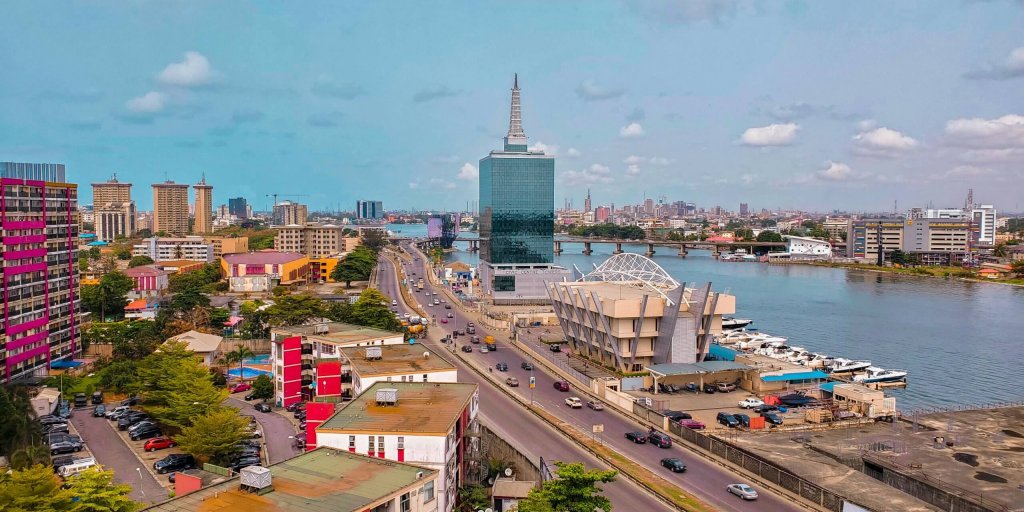
- Total speakers: 121 million
- Native speakers: 5 million
Nigerian Pidgin, also known as Naija, is an English-based creole language widely spoken across Nigeria and parts of West Africa. While only a small percentage of its speakers use it as a native language, it serves as a crucial lingua franca that bridges communication across Nigeria’s 500+ ethnic groups and languages.
Nigerian Pidgin combines English vocabulary with simplified grammar and influences from local Nigerian languages like Yoruba, Igbo, and Hausa.
Despite being widely spoken, Nigerian Pidgin is not officially recognized in Nigeria. However, its use continues to grow, proving its cultural significance and its role as a unifying medium in one of Africa’s most linguistically diverse nations.
15. Egyptian Arabic

- Total speakers: 103 million
- Native speakers: 78 million
Egyptian Arabic, also known as Masri, is the most widely understood dialect of Arabic due to Egypt’s large population and its influence in the Arab world through media, music, and film. Spoken primarily in Egypt, it differs significantly from Standard Arabic, which is used in formal contexts like education and news.
Egyptian Arabic incorporates influences from languages like Turkish, Italian, and French. Its grammar and vocabulary are simpler compared to Standard Arabic, and its unique pronunciation, such as substituting the “j” sound with “g,” makes it distinct among Arabic dialects.
Infographic
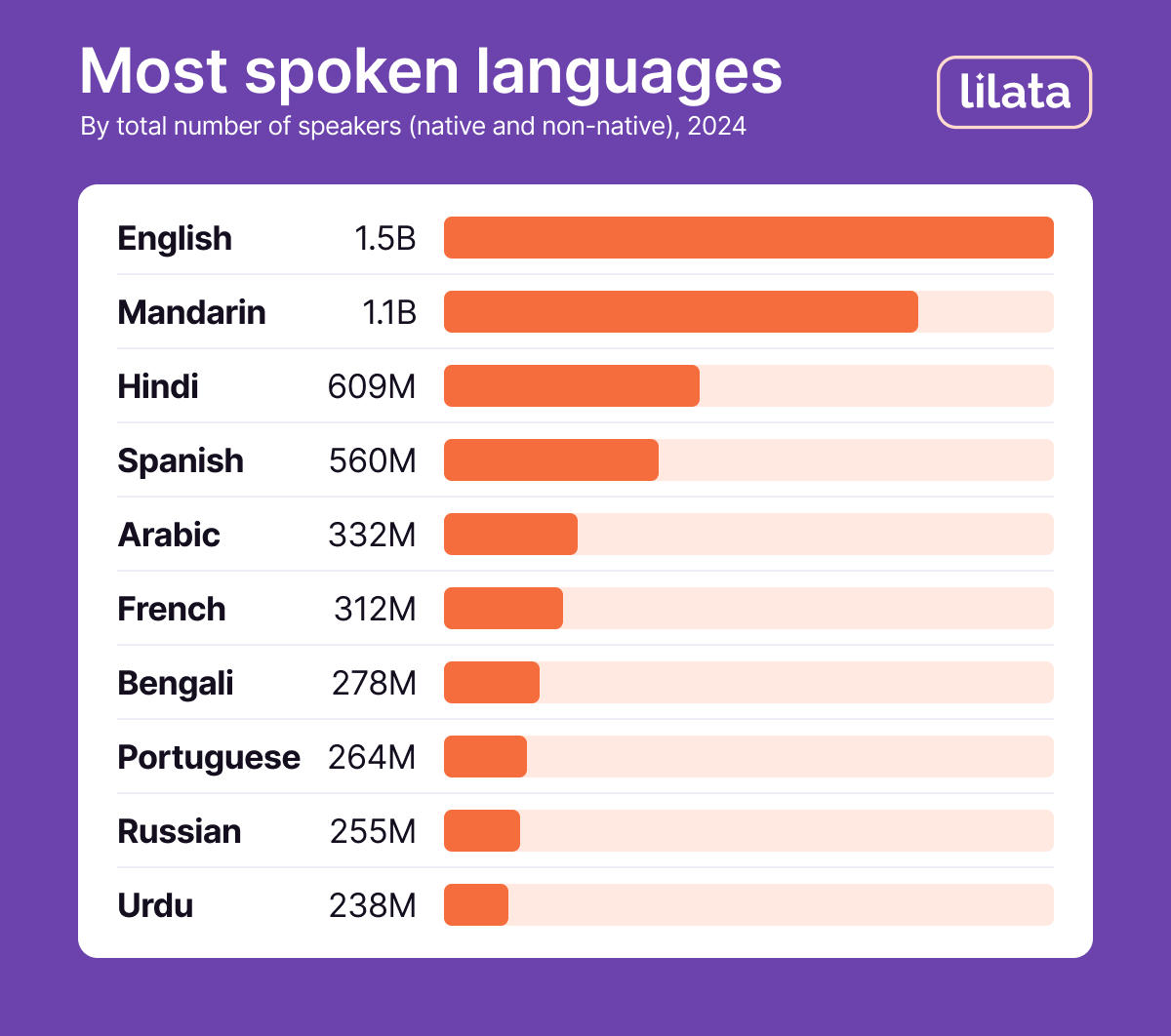
Curious about common languages? Check out our overview of the most spoken languages in the U.S.



